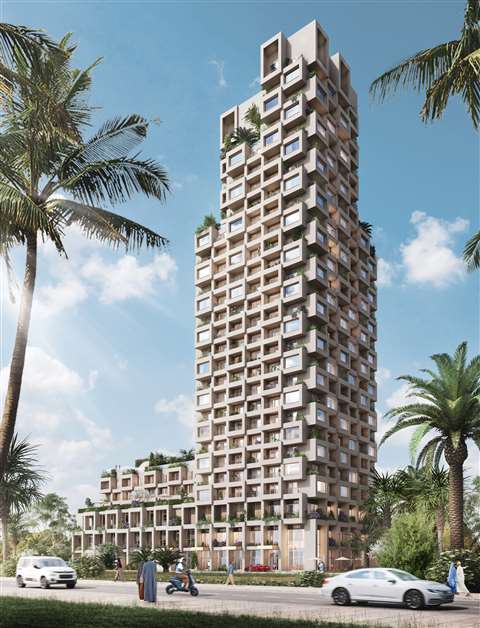Plans revealed for world’s highest ‘green’ building
06 October 2022

The Indian Ocean island of Zanzibar is planning what is reported would be the highest ‘green’ building in the world, a 28-storey apartment tower designed in hybrid timber technology.
Named Burj Zanzibar – burj meaning tower in Arabic – the high-rise is designed to reach 96m in height. It has been called a ‘vertical green village’ and would be the first timber structure in the world of such proportions.
The design of the mixed-use apartment and commercial building, in a beehive style, was unveiled to the public in October. Dutch-born architect Leander Moons, responsible for the concept, said, “Burj Zanzibar is not just an outstanding building but a new ecosystem for the future of living.”
The tower, which will have 266 residences, is to be located in Fumba Town, East Africa’s eco-town developed by German-led engineering firm CPS.
Burj Zanzibar is planned as a hybrid timber tower. A steel-reinforced concrete core is designed to meet all required fire and life safety standards. The project is to be executed by a consortium of leading specialists from Switzerland, Austria, Germany, South Africa, Tanzania and the US. Green roof gardens and planted balconies will further reduce the carbon footprint of the building.
“Burj Zanzibar will be the highlight and natural continuation of our efforts to provide sustainable housing in Africa, thereby empowering local employment and businesses,” added CPS CEO, Sebastian Dietzold.
Once realised, Burj Zanzibar would be the highest timber building in the world and Africa’s first high-rise ever using this innovative technology.
The 86m Ascent Tower in Milwaukee, US, was recently certified as the world’s tallest timber hybrid building by the Council on Tall Buildings and Urban Habitat (CTBUH). Africa’s highest conventional skyscraper is a 385m office tower named ‘Iconic Tower’ in Egypt, still under construction.







